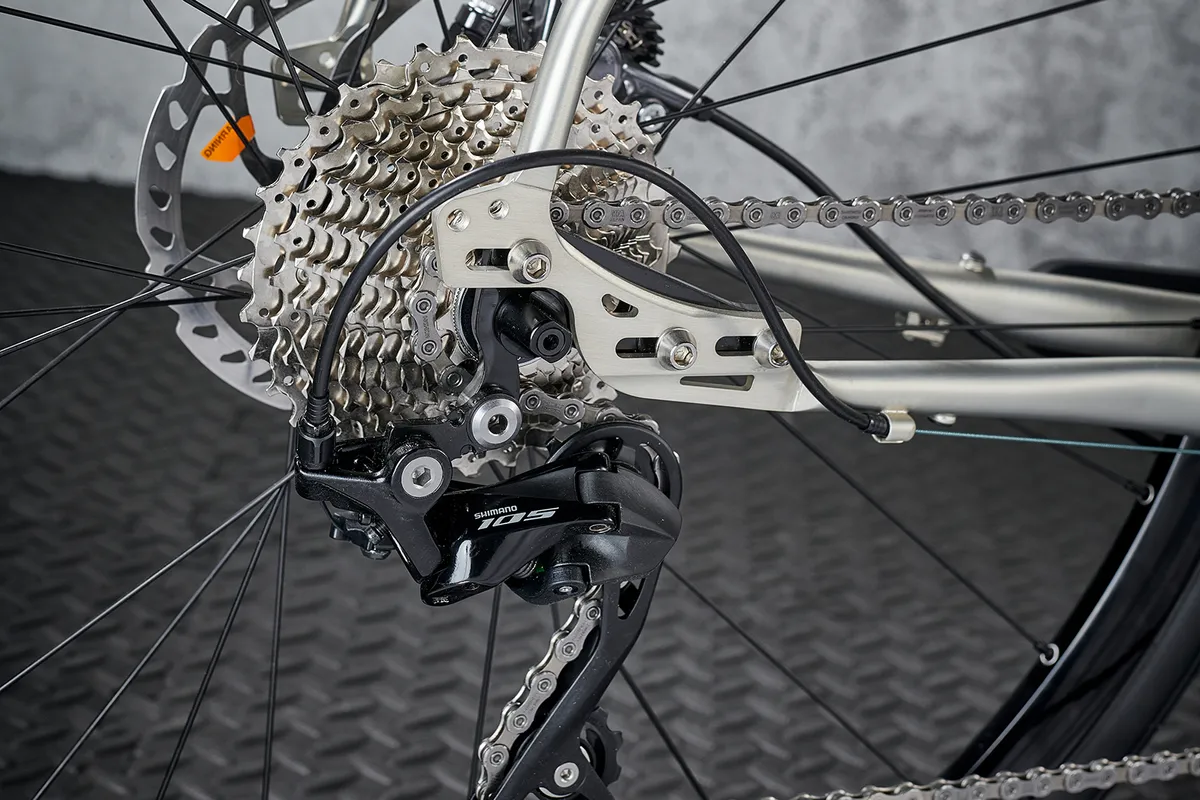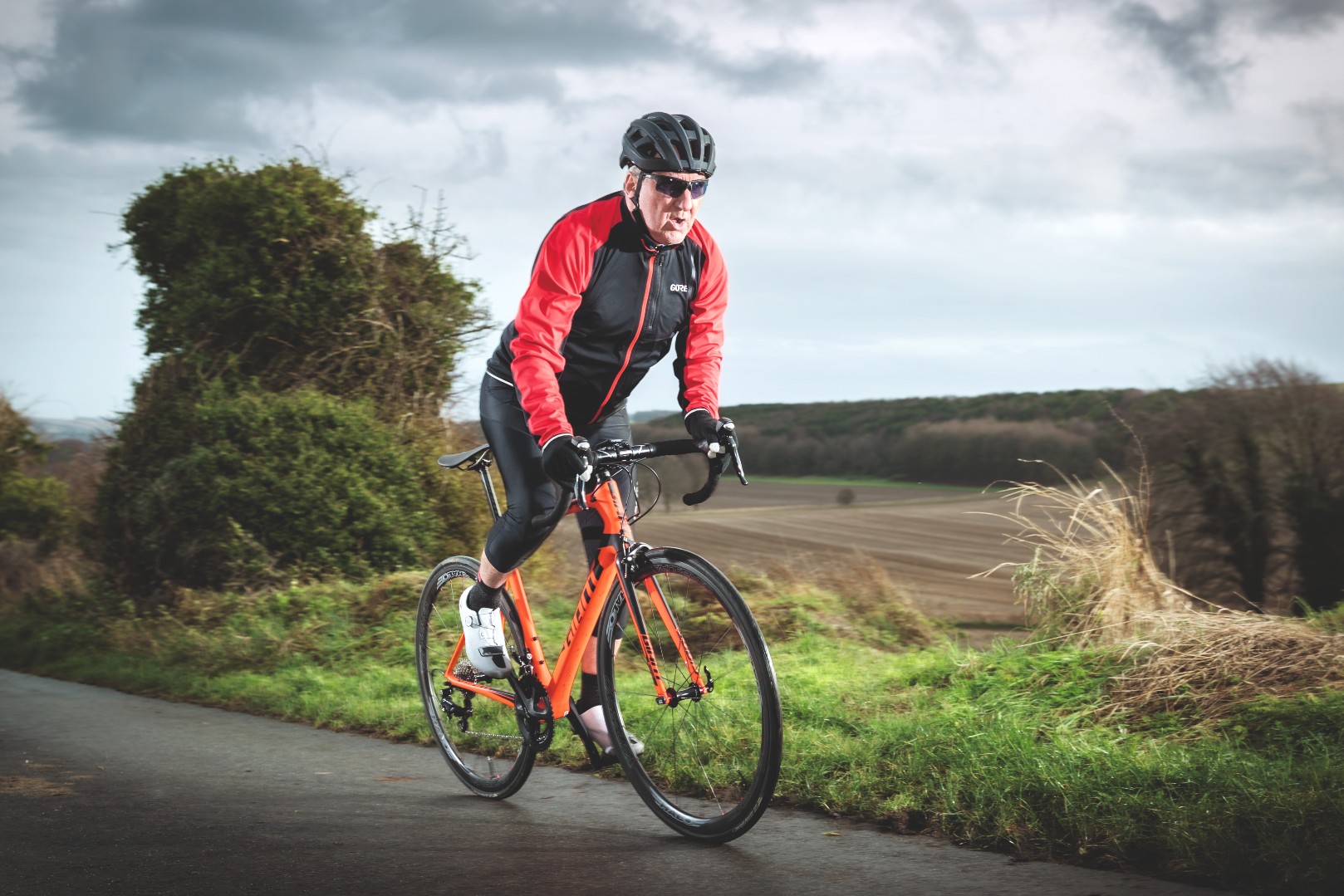Ah, college quads, the Footlights, cricket at Fenners… all things Cambridge, where The Light Blue bikes were first produced in 1895. Fast forward to 2020 and they’re designed in the city by the founder’s grandson.
Back then they would have been made with lugged steel, rather than in the Darwin Two Way Street's tidily TIG welded guise. As for the Darwin’s hydraulic brakes and 22 Shimano STI gears – 21 more than in 1895 – these would have been but a laudanum-induced dream.

The Light Blue describes the Darwin as a “light, quick, steel street bike” that can encompass commuting, tackling towpaths and even lightweight touring.
The standard black version starts at £1,574.99 with Shimano 105 and TRP Spyre mechanical disc brakes, but I upgraded to a galvanised frame with a full Shimano 105 hydraulic disc groupset, taking the cost up to £2,054.99 (£1,904.99 for black).
Shimano 105 – to nobody’s great surprise – worked as well as ever, with the wide-ranging gears offering slick, efficient changes and the brakes delivering easy, minimal-effort stopping.
The frame material befits a brand with such an iconic British name, coming in the form of Reynolds chromoly 725 steel. This is essentially a spin-off of Reynolds 531, the material that, even today, has more Tour de France victories to its name than any other.

It’s a heat-treated steel, which means it can be made with narrower wall diameters, and the tubes are butted – thicker at the ends where more strength is required.
This ‘traditional’ frame material is paired here with a chromoly steel fork complete with lugged bottle-cage mounts and mudguard fittings. Both the frame and fork have quick-release axles, rather than thru-axles, but this didn’t seem to have any deleterious effect on the bike’s braking.
The Light Blue ups the Darwin’s versatility further with sliding rear dropouts, which allow the bike to be run with derailleur, singlespeed and hub gear setups. It lets you tension the chain, and there’s a split in the right seatstay that allows you to fit long-lasting belts such as the Gates Carbon belt drive.
Both the frame and fork have room for 45mm tyres for gravel and off-road riding, or even pretty chunky 35mm tyres with mudguards for year-round riding on poor roads.

The result is a bike that in many ways is a successor to that much-loved 1984 Raleigh Clubman 531. But the Darwin’s better in just about every respect – evolution, I suppose, which is very apposite considering the Darwin name.
The newer bike is a fair bit lighter, too, and that’s even with its not-exactly-light 2,100g frame and 1,050g fork.
It’s also more comfortable, and has stratospherically better braking. Anybody criticising today’s hydraulic discs wasn’t brought up on sidepull rim brakes that were ‘brakes’ in name only, especially in rain.
Loads more gears and a much wider overall range provide both a higher top gear and lower bottom. The list goes on. It’s light, it’s quick, it’s plush, it’s versatile. It’s a long-distance commuter, a light tourer for weekends or longer away, or even a sometime bikepacker with its 32mm tyres. It’s steel, so it’ll last a lifetime.

The one-to-one ratio bottom gear keeps you in the saddle on steeper climbs and I found this felt at home wherever I took it.
It’s probably best as a day-long rouleur, spinning you through country lanes at whatever speed you’re fit enough to achieve.
The flared handlebar comes into its own on towpaths and the like, and its very deep drop means you can get down low if you want to crank it up.
The Passport saddle is a little too deeply padded for my taste but it was actually better than I expected.
It may not be quite a first-class degree for this Light Blue but the Darwin Two Way Street is an excellent all-round road machine with a wide-ranging appeal.
The Light Blue Darwin Two Way Street geometry
- Sizes (* tested): S, S/M*, M, M/L, L
- Seat angle: 73.5 degrees
- Head angle: 70.5 degrees
- Chainstay: 44.5cm
- Seat tube: 52cm
- Top tube: 55.5cm
- Head tube: 17cm
- Fork offset: 5cm
- Trail: 7cm
- Bottom bracket drop: 7.2cm
- Wheelbase: 1,057mm
- Stack: 60.3cm
- Reach: 37.6cm
How we tested
This bike was tested as part of a five-bike grouptest of steel road bikes and road-biased all-rounders.
Steel might be the oldest of bike building materials but can be used to create comfortable, long-lasting and repairable bikes. It's also recyclable, so better for the planet than you might think.
Modern tastes are felt though with disc brakes, tubeless tyres and clearances for wider rubber all making an appearance.
Bikes also tested:
- All-City Zig Zag
- Genesis Volare 853
- Cinelli Vigorelli
- The Light Blue Darwin
- Spa Cycles Elan 725
Product
| Brand | Light_blue |
| Price | £2055.00 |
| Weight | 10.05kg |
Features
| Fork | DB chromoly steel with lugged mounts |
| Stem | Genetic STV |
| Chain | Shimano HG601 |
| Frame | Reynolds 725 chromoly steel |
| Tyres | 32mm Schwalbe Durano |
| Brakes | Shimano 105 hydraulic discs |
| Cranks | Shimano 105 50/34 |
| Wheels | Halo Whiteline Disc |
| Headset | Gusset |
| Shifter | Shimano 105 |
| Cassette | Shimano Sora 11-25 |
| Seatpost | Passport Navigator |
| Handlebar | Genetic Flare |
| Bottom bracket | Shimano SM BBR60 |
| Available sizes | S, S/M, M, M/L, L |
| Rear derailleur | Shimano 105 |
